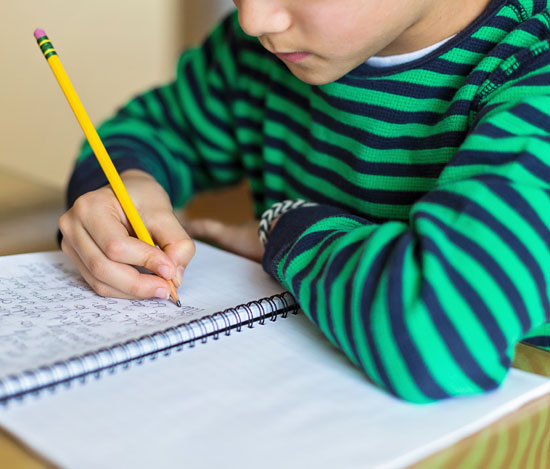Learning disabilities are problems that affect the brain’s ability to receive, process, analyze, or store information. These problems can make it difficult for a student to learn as quickly as someone who isn’t affected by learning disabilities. Learning disabilities affect how a child understands, processes, and responds to new information. Not only do they interfere with school and learning, but they can also contribute to emotional problems. However, having a learning disability doesn’t mean that your child can’t do well in life.
Signs and symptoms of learning disabilities
Learning disabilities look very different from one child to another. One child may struggle with reading and spelling, while another loves books but can’t understand math. Still another child may have difficulty understanding what others are saying or communicating out loud. The problems are very different, but they are all learning disorders.
Preschool signs and symptoms of learning disabilities
- Problems pronouncing words
- Trouble finding the right word
- Difficulty rhyming
- Trouble learning the alphabet, numbers, colors, shapes, days of the week
- Difficulty following directions or learning routines
- Difficulty controlling crayons, pencils, and scissors or coloring within the lines
- Trouble with buttons, zippers, snaps, learning to tie shoes
Ages 5-9 signs and symptoms of learning disabilities
- Trouble learning the connection between letters and sounds
- Unable to blend sounds to make words
- Confuses basic words when reading
- Consistently misspells words and makes frequent reading errors
- Trouble learning basic math concepts
- Difficulty telling time and remembering sequences
- Slow to learn new skills
Ages 10-13 signs and symptoms of learning disabilities
- Difficulty with reading comprehension or math skills
- Trouble with open-ended test questions and word problems
- Dislikes reading and writing; avoids reading aloud
- Spells the same word differently in a single document
- Poor organizational skills (bedroom, homework, desk is messy and disorganized)
- Trouble following classroom discussions and expressing thoughts aloud
- Poor handwriting
- comprehension, and math.
Common Types of Learning Disabilities
| Dyslexia | Difficulty reading | Problems reading, writing, spelling, speaking |
| Dyscalculia | Difficulty with math | Problems doing math problems, understanding time, using money |
| Dysgraphia | Difficulty with writing | Problems with handwriting, spelling, organizing ideas |
| Dyspraxia (Sensory Integration Disorder) | Difficulty with fine motor skills | Problems with hand–eye coordination, balance, manual dexterity |
| Dysphasia/Aphasia | Difficulty with language | Problems understanding spoken language, poor reading comprehension |
| Auditory Processing Disorder | Difficulty hearing differences between sounds | Problems with reading, comprehension, language |
| Visual Processing Disorder | Difficulty interpreting visual information | Problems with reading, math, maps, charts, symbols, pictures |
What Causes Them?
No one’s exactly sure what causes learning disabilities. But researchers do have some theories as to why they develop, including:
- Genetic influences.Experts have noticed that learning disabilities tend to run in families and they think that heredity could play a role. However, researchers are still debating whether learning disabilities are, in fact, genetic, or if they show up in families because kids learn and model what their parents do.
- Brain development.Some experts think that learning disabilities can be traced to brain development, both before and after birth. For this reason, problems such as low birth weight, lack of oxygen, or premature birth may have something to do with learning disabilities. Young children who receive head injuries may also be at risk of developing learning disabilities.
- Environmental impacts.Infants and young kids are susceptible to environmental toxins (poisons). For example, you may have heard how lead (which can be found in some old homes in the form of lead paint or lead water pipes) is sometimes thought to contribute to learning disabilities. Poor nutrition early in life also may lead to learning disabilities later in life.
Treatment
- Counselling and psychotherapy
- Special education
- Remedial therapy
- Speech and language therapy
- Medicines may be required in some cases.
A single factor to remember is that LD children want acceptance, approval, success and achievement more than anything else. Here are some suggestions to help you help your child. Ensure that child has the appropriate help – that the school has a program in place to accommodate child’s learning disability, and that she has remedial therapy after school hours if necessary. Consult often with child’s teachers and therapists. Accept child’s uniqueness unconditionally, both strengths and weaknesses. Be realistic in your expectations and demands.
- Make a point of emphasizing and encouraging your child’s strengths, interests and abilities while playing down her weaknesses.
- Create opportunities where child can show others what he/she is capable of doing and reward the child as often as you can.
- Routine is essential for your LD child. Not only does it make your life a lot easier, but child then knows what is expected of him/ her and when, and this makes child feel secure.
- Don’t get anxious about school grades – expect best efforts at all times, but remember that best effort might only be a ‘D’. Help the child to set realistic goals for himself and to compete with himself rather than with others.
- Provide a safe environment for the child to attempt difficult tasks, and maybe even fail at them, without fear of ridicule or rejection. When child feels secure in his environment, he will feel secure to try his best.
- Provide sympathy and understanding, encouragement and support, and loads of unconditional love.


